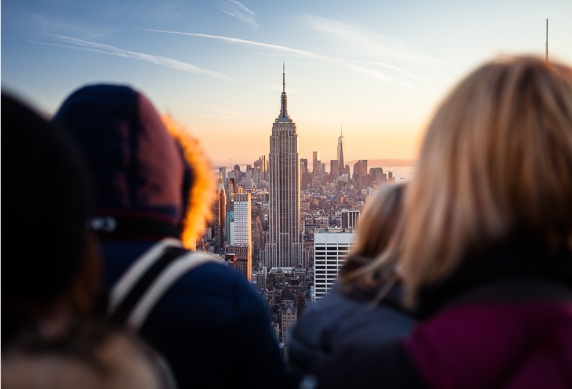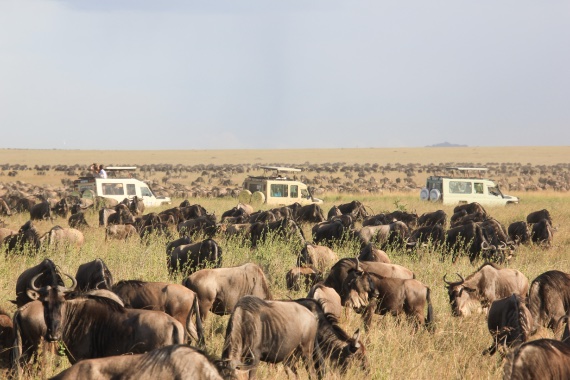In its 1996 edition, the Alaska travel guide written by Ed Readicker-Henderson portrayed the small town of Whittier as a quiet, remote, unspoiled paradise, perched on the edge of an estuary and lying at the foot of a glacier. At the time no roads led there, but soon afterwards one was built. And over the asphalt came the tourist hordes, the traffic jams, the pollution and the rubbish. In subsequent editions, Readicker-Henderson’s assessment changed radically: “Welcome to a little suburb of hell.” All too often the arrival of tourist development in a place has led to unsustainable exploitation, ruining its former virtues. And yet it is said that we live in the age of sustainable tourism and ecotourism. How much truth is there in this? Are we killing the planet as we travel around it?
It is worth starting with a few definitions. The United Nations, a reference body on these issues, defines sustainable tourism—through its World Tourism Organisation (UNWTO)—as “tourism that takes full account of its current and future economic, social and environmental impacts, addressing the needs of visitors, the industry, the environment and host communities.” A particular case is ecotourism, which according to The International Ecotourism Society (TIES) is defined as “responsible travel to natural areas that conserves the environment, sustains the well-being of the local people and involves interpretation and education.” Not all sustainable tourism is ecotourism, although if all tourism aspires to be sustainable—as outlined in the goals of the UN Agenda 2030—ecotourism should be all the more so.
The most sustainable way to travel
But every tourist trip has an undoubted environmental impact, starting with the journey itself. With 21% of all CO2 emissions, transport in general is second only to industry as a whole in its global contribution to climate change, although it ranks first in countries such as the USA. In terms of the contribution of households to greenhouse gas (GHG) emissions, they directly produce 20% of the global total, of which transport accounts for almost three quarters. But if indirect emissions caused by households are added, which include electricity consumption and use and account for 60% of all global emissions, transport also contributes almost a third; this category would include not only regular car trips, but also travel.

Whichever way you look at it, road vehicles—especially private cars—are a major contributor to transport emissions: they are responsible for three quarters of this category attributable to households, and a similar proportion of emissions from all transport globally. The progressive replacement of conventional vehicles by hybrids and electric vehicles should ease this burden in the near future, although these are not without an environmental impact and carbon footprint either.
Compared to the enormous climate impact of road transport, even aviation doesn’t look so bad, despite often being the focus of attention and the subject of campaigns such as Flygskam or Flight Shame. Air traffic accounts for just under 12% of transport emissions, compared to almost 75% for road traffic (converted into global figures, aircraft contribute 2.5%, although a 2021 study raises their contribution to climate change to 4% due to other effects and GHGs other than CO2). By comparison, maritime traffic contributes 10.6%. But the mode of travel with by far the lowest impact is rail, with only 1% of global transport emissions. Therefore, when it comes to holiday travel, there is no doubt that rail is always the most responsible and sustainable option. Technological advances continue to reduce the carbon footprint of aviation, but the future of hybrid and electric aircraft is still a long way off.
Tourism’s carbon footprint
However, the environmental impact of travel goes much further. A 2018 study published in Nature estimated that global tourism is responsible for 8% of global GHG emissions. Seventy percent of this comes from transport, but the remaining 30% comes from the consumption of products and services, mainly food, accommodation and shopping. The study highlights that the footprint of tourism is shared between travellers and destinations; in both cases, the US is responsible for the majority of emissions, followed by China, Germany and India. Small island countries have a greater impact, with between 30-80% of their emissions due to tourism.
And the sector does not appear to be on a steady path towards sustainability: according to the same study, this carbon footprint increased by 15% between 2009 and 2013 alone. A 2019 UNWTO report estimates that transport-related emissions from tourism—which are responsible for 22% of those due to transport in general—accounted for 5% of all man-made emissions in 2016, and will increase by 25% by 2030, bringing their share of the global total to 5.3%.

In the realm of big numbers and high-level institutions, the industry adheres to the Glasgow Declaration, launched in 2021 on the occasion of the UN COP26 climate conference. According to the UN, the agreement “proposes a coordinated plan for tourism to support the global commitment to halve emissions by 2030 and achieve net zero by 2050 and requests signatories to make tangible commitments around planning, measuring and reporting.” The declaration defines five broad lines: measure, decarbonise, regenerate, collaborate and finance, urging all actors in the tourism sector to join the commitments. The industry suffered a drastic decline during the worst times of the COVID-19 pandemic, and the vision of the Glasgow signatories is that the expected regrowth should not be done by returning to the same old normal, but through more sustainable pathways at all levels, not just climate.
The shadows of ecotourism
But the truth is that, coming down to ground level, it is difficult to foresee future achievements when even ecotourism is not always as “eco” as it claims to be. In the face of unsustainable and devastating mass tourism, ecotourism, in smaller numbers, with natural destinations and under the prism of minimising impact, seems preferable. Tourists typically pay fees for nature conservation and local development, objectives that have been undermined by the hiatus brought about by the pandemic. Specific studies suggest that ecotourism has benefited species such as the green macaw in Costa Rica, the Egyptian vulture in Spain, the western hoolock gibbon in India, the Cape penguin, the African wild dog, the cheetah and the golden lion tamarin in Brazil.
In contrast, and in the “debit” column, other studies have shown that human presence makes some animals less fearful and therefore easier prey, while others such as elephants become more aggressive and flighty. Some species have clearly been harmed by ecotourism, such as the New Zealand sea lion, as the disturbance of breeding sites exacerbates the harms of intensive fishing. In addition, ecotourism can increase disease transmission, both in one direction and the other. As experts point out, the effect of ecotourism is not black and white, but depends on the species, the local circumstances, the how, the when and the where.

The worst can happen when you try to exploit the goose that lays the golden eggs. Nature tourism is growing by 10-30% every year. Operators may be tempted to follow the business logic of growth, but growth cannot be unlimited when the resource on which they depend, nature, is not.
A sobering example is the Treetops Hotel in Kenya, famous for being the place where in 1952 the then Princess Elizabeth of England became Queen when her father died in London. The Treetops was founded in the 1930s as a two-room jungle tree hut to observe the wildlife that flocked to the nearby waterhole at night. The real-life anecdote popularised the accommodation, which gradually expanded to 50 rooms.
But with expansion came decline. The salt that the Treetops staff spread on the ground to attract herbivores damaged the surrounding vegetation, which was also being eaten away by the many elephants attracted by the salt. Today the Treetops is no longer a jungle lodge, but a glade of stunted vegetation. And the resulting drastic decline of the animals was highlighted in a 2013 study. Without wildlife, there will be no tourists. Without tourists, there will be no money for wildlife conservation.
Ultimately, the sustainability of tourism is a shared task; whether we can travel the world without killing it also depends on our choices as travellers. Some travellers choose to buy carbon offsets offered by companies. And when it comes to eating, shopping or selecting accommodation, we can choose according to the sustainability criteria provided by companies, as long as we manage not to be fooled by greenwashing (see box). We all take holidays, but our environmental responsibility should not.
The tourist origin of greenwashing
Greenwashing is a term that has become popular to define actions that certain entities claim to carry out in the name of environmental responsibility, but which are criticised for their uselessness or for concealing other interests. The origin of the term is actually from the tourism sector itself, and the washing to which it refers had a very literal meaning.
In 1983, American environmentalist Jay Westerveld, then a student, was travelling to Samoa to participate in research. During a surfing stopover in Fiji, he sneaked into a luxury resort in the hope of getting a clean towel. Somehow, he was able to read the card left there inviting guests to reuse towels instead of throwing them in the wash to save the environment. Westerveld found it ironic that the resort was expanding its facilities, taking up more natural space, and yet focusing its ecological efforts on reducing towel laundering. Obviously, this measure had another purpose, to save laundry costs. Three years later, Westerveld wrote an essay in which he coined the term greenwashing to define this action; and rarely has a campaign caught on so quickly in a sector as that of showcasing the environment as a pretext for reducing laundry costs in the hotel industry.

In fact, the concept existed even before Westerveld. With the awakening of modern environmentalism in the 1960s, many companies began to adapt their advertising to this new trend, what the publicist Jerry Mander called “ecopornography”. But it was Westerveld’s greenwashing that eventually triumphed. Today, the tourism industry is not spared from accusations of greenwashing either, due to frequent unfounded or exaggerated claims in a sector where everything “eco” sells.
Javier Yanes
Comments on this publication